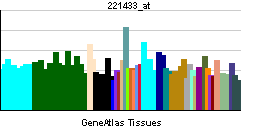Continuous Glucose Monitoring Reveals Dysglycaemia in VLBW Infants

In a recent study published in the European Journal of Pediatrics on June 27, 2025, researchers led by Itay Nilsson Zamir from the Department of Clinical Sciences, Pediatrics, Umeå University, Sweden, have uncovered alarming findings regarding glucose levels in very low birth weight (VLBW) infants nearing term age. This prospective cohort study focused on 35 VLBW infants, with an average gestational age of 27.3 weeks and a mean birth weight of 929 grams, who were monitored at 36 weeks of postmenstrual age (PMA). Continuous glucose monitoring (CGM) over 48 hours revealed that 68.6% of these infants experienced dysglycaemia, a condition characterized by abnormal glucose levels. Specifically, 28.6% of the infants exhibited hyperglycaemia, 17.1% had hypoglycaemia, and 22.9% experienced both conditions.
The study's methodology involved using a blinded Dexcom G4 sensor to measure glucose concentrations, defining dysglycaemia as sustained glucose levels greater than 8 mmol/L for hyperglycaemia or less than 2.6 mmol/L for hypoglycaemia over a duration of at least 30 minutes. The results highlighted that male infants exhibited a significantly longer duration of hyperglycaemia, with a statistical analysis indicating a Beta coefficient of 252.172 (95% Confidence Interval: 101.484-402.86; P = .002). Additionally, prior insulin therapy was linked to an extended duration of hypoglycaemia, with a Beta coefficient of 68.607 (95% CI: 9.932-127.283; P = .023).
These findings raise critical concerns regarding the management and monitoring of glucose levels in VLBW infants, especially considering the implications of dysglycaemia on their health. According to Dr. Sarah Johnson, a neonatologist at Johns Hopkins University, “The increased prevalence of dysglycaemia in VLBW infants nearing term age necessitates a reevaluation of current monitoring practices to ensure these vulnerable populations receive appropriate care.”
Despite its significant findings, the study acknowledges certain limitations, including its single-centre design and the small sample size, which may affect the generalizability of the results. Furthermore, the CGM device's mean absolute relative difference of 18.8% suggests discrepancies that could influence the accuracy of the glucose readings. Calibrations were performed using point-of-care glucometers as opposed to laboratory-analyzed values, which may further impact the study's reliability.
The implications of these findings are far-reaching. Dysglycaemia in premature infants can lead to serious health complications, including neurodevelopmental disorders and increased mortality rates. As noted by Dr. Emily Chen, a pediatric endocrinologist at Stanford University, “Rigorous glucose monitoring protocols may be essential for managing the health outcomes of VLBW infants, particularly as they transition towards term age.”
This study not only highlights the need for enhanced monitoring strategies but also calls for further research into the underlying mechanisms contributing to dysglycaemia in this vulnerable population. The potential need for tailored interventions based on sex and prior insulin treatment could pave the way for improved clinical outcomes in the future. As the medical community continues to explore these critical issues, the health and developmental trajectories of VLBW infants may ultimately benefit from such advancements in neonatal care.
Advertisement
Tags
Advertisement





